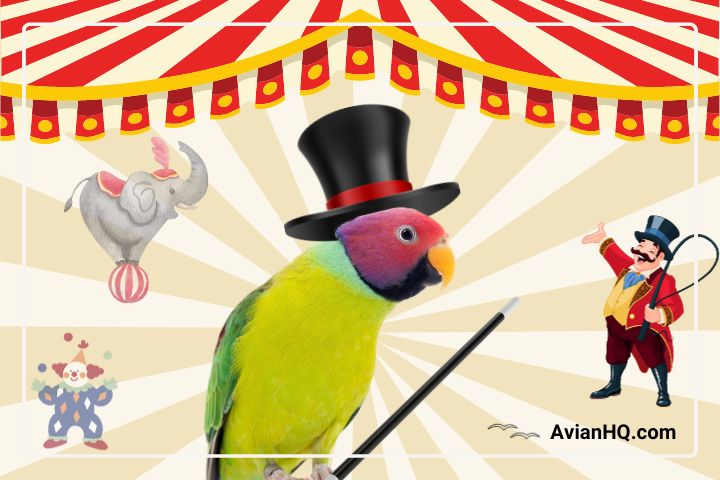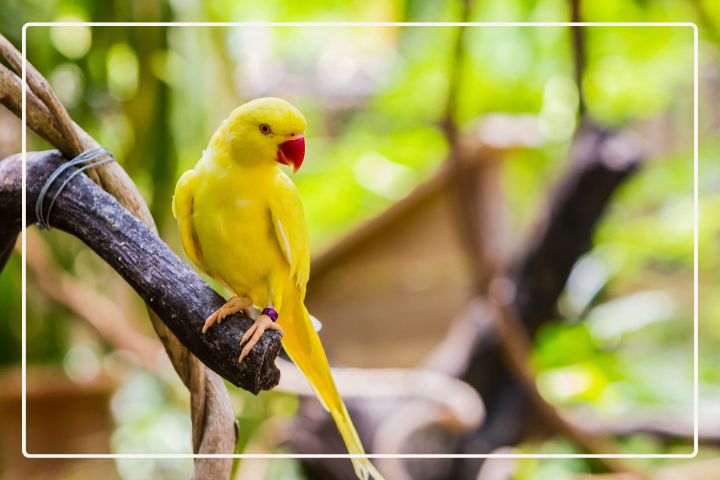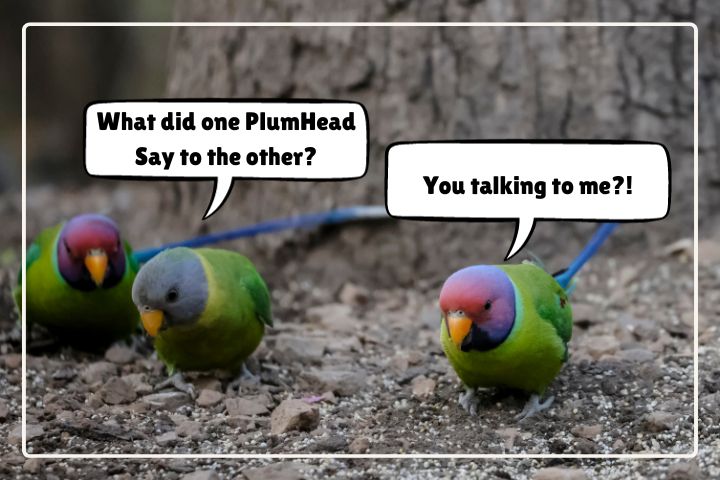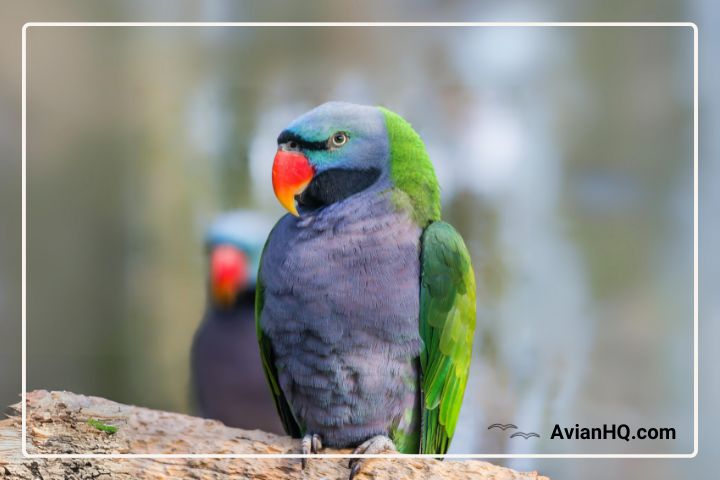How To Train Plum Headed Parakeets
While parakeets aren’t always eager students like African greys, plum heads have proven themselves to be a highly trainable species of parrot. Their inquisitive nature and desire for interaction lend themselves well to learning simple tricks and behaviors. With the right techniques and a patient approach, plum headed parakeets can learn to target objects, fly to you on recall, spin in circles, and much more.
Training provides great mental stimulation and exercise for your parakeet. The additional interaction during training sessions also serves to strengthen the bond between you and your bird. With time and persistence, you’ll find your parakeet eagerly looks forward to each fun new lesson! This guide will walk you through all the steps and techniques needed to successfully train your plum headed parakeet at home.
Step-by-Step Guide to Training Your Plum Headed Parakeet
Training your plum headed parakeet requires some preparation and planning to set yourself and your bird up for success. Follow these key steps to get started:
Setting Up for Training
Select an area in your home that will be designated as your parakeet’s training zone. This space should be relatively quiet and free of distractions. Kitchens and living rooms are often too busy and noisy. A spare bedroom or office is ideal. The training area doesn’t need to be large, but you want enough room for short practice flights.
Gather any supplies you’ll need like:
- Clicker – for marking desired behaviors
- Target stick – can be a chopstick, dowel, or specialized parrot pointer
- Treats – millet spray, safflower seeds, nut pieces
- Perch – for positioning your parakeet during sessions
Before a training session, make sure your parakeet is hungry and energetic. Training after meals when your bird is lethargic won’t be productive. You want your parakeet’s natural food drive and curiosity to be primed for learning new behaviors.
Click Training Basics
Clicker training is a positive reinforcement method using conditioning to teach behaviors. The click marks the exact moment your parakeet does what you want, allowing you to precisely reinforce the correct action with a reward.
To get your parakeet used to the clicker:
- Click once and immediately offer a treat
- Repeat this pairing until your parakeet associates the click with getting a treat
- Only click once per desired behavior then quickly reward
- Keep initial sessions short with just 5-10 repetitions
Once your parakeet understands the click equals a reward, you can begin shaping behaviors…
Important Training Tips
When clicker training your plum headed parakeet, keep these key tips in mind:
- Frequent short sessions of just 5-10 minutes are more effective than occasional long sessions which can cause frustration.
- Use highly motivating treats your parakeet loves like small pieces of millet spray, safflower seeds, nuts, or fresh fruits. Avoid boring fillers like regular seed mix.
- Start with simple behaviors like targeting objects with their beak before moving to more complex tricks. Slowly build up your parakeet’s skills through incremental training.
- Always end sessions on a positive note after a correctly performed behavior and reward. If your parakeet seems tired or struggling, pick up training again later.
- Make each session fun! Training should be mentally stimulating but not stressful. Praise and give your parakeet your full attention.
- Patience and consistency are key. Persist through plateaus in training and celebrate small successes. Your hard work will pay off!
With the right techniques and rewards, you’ll find your clever plum head rises to the training challenge. Next let’s go over teaching some foundational behaviors.
Teaching Basic Behaviors
Using clicker training and positive reinforcement, you can teach your plum headed parakeet a variety of basic behaviors:
Target Training
Start by teaching your parakeet to touch their beak to the end of a target stick, your finger, or other objects on cue.
- Hold the target near their beak and click/reward any interaction with it
- Gradually shape the behavior by only clicking when they deliberately touch the target
- Add a verbal cue like “touch” as they improve
Target training is the foundation for teaching many other behaviors down the road.
Step Up
Step up trains your parakeet to perch on your hand or finger on command.
- Have them target your finger with their beak to lure them close
- Slowly move your hand under their feet to prompt stepping up
- Click and reward once they fully step up then give the cue like “step up”
Recall
Teach your parakeet to always return to you on recall for safety.
- Start with small distances and reward just moving toward you
- Gradually increase distance and only reward fully returning to your hand/arm
- Use a consistent recall word like “come”
Spinning
One fun trick is to teach your parakeet to turn in circles on a perch.
- Lure them sideways using a target stick to initiate moving
- Reward small steps then start adding a spin cue like “turn”
- Work up to multiple continuous spins on the perch
Have fun with the wide range of behaviors you can teach your clever plum head!
Advanced Trick Training
Once your plum headed parakeet has mastered some basics, you can move on to more advanced tricks like:
Waving
Teach your parakeet to lift their foot and “wave” on cue.
- Target their foot lightly to prompt lifting
- Click and reward small foot lifts at first
- Gradually shape into a big wave motion while adding your wave cue
Basketball
They can learn to put balls into a small hoop or net.
- Start by rewarding touching then pushing the ball
- Shape the behavior into picking up the ball and tossing it into the hoop
- Add your basket cue as their accuracy improves
Ring Toss
Have your parakeet fly through hoops or toss rings onto pegs.
- Begin with targeting the ring/hoop and work up to flying through
- Use toss or ring cues when they are regularly successful
Agility Training
Set up mini obstacle courses for your parakeet with ladders, poles, tunnels, etc. They enjoy the mental challenge!
With persistence, you’d be amazed at what parakeets can learn. Simply break down tricks into small steps and celebrate all progress.
Flight Recall Training
Teaching reliable recall is an important part of training for your plum headed parakeet’s safety. If they ever escape or get outside, you want them to immediately return on command.
Here are some tips for effective flight recall training:
- Start inside with short distances of just a few feet to avoid overwhelming or frightening them when first learning.
- Use highly valued treats only for recall training to reinforce prompt responses. Pieces of walnut, almond, or fresh fruits make excellent recall rewards.
- Be patient and systematic in slowly increasing distance. Move further away only once your parakeet is consistently recalling promptly from its current distance.
- Employ a clear, consistent recall cue like “Come!” in an upbeat tone. Use a whistle or bell as an alternative unique recall signal.
- Practice in multiple locations and with distractions present to proof your parakeet’s recall abilities. Have family members help with recall drills too.
- End sessions on a positive note with a correct recall. If your parakeet seems distracted or reluctant, simply try again later when their cooperation is better.
With time and positive reinforcement, you can have full confidence in your parakeet’s flight recall ability if they ever escape your careful watch!
Potty Training
While parakeets aren’t fully litter trainable like cats, you can manage their mess and teach them preferred potty spots. Here’s how:
- Observe where your parakeet tends to go most and place a perch or small litter box in that area. Line it with newspaper or puppy pads for easy cleaning.
- When you see them using the designated potty spot, quickly say your potty cue word like “go potty”, then click and reward.
- If they go anywhere else, immediately but gently return them to the potty zone without any reward.
- Be patient and consistent. Potty training takes time before they associate the right location.
- Clean the area thoroughly with enzymatic cleaner to remove residual odors that can draw them back.
With consistent reinforcement of the proper potty place, you can at least contain the mess and teach good habits! Expect the occasional accident but stay positive in your training.
Bonding with Your Parakeet
In addition to structured training sessions, it’s important to strengthen your bond with your plum headed parakeet through quality time together. Here are some tips:
- Spend time interacting with your parakeet outside of training too. Offer toys and puzzles for enrichment and engage in gentle petting if they enjoy it.
- Notice their body language and vocalizations to understand their mood and needs day-to-day. Give them space if they seem agitated or nippy.
- Chat, whistle, and sing to your parakeet as you go about your day. They love hearing your voice and will pick up words!
- Consider getting a bird-safe mirror for their cage so they have a companion when you are away. Parakeets are social flock birds.
- Offer new foods like vegetable pieces and healthy people food (in moderation!) as you eat to positively associate sharing meal time.
- Establish a consistent daily routine of feedings, sleep schedule, training times, etc so they feel secure.
Put in the effort to understand your parakeet’s unique personality, and you’ll find they eagerly seek out your companionship!
Troubleshooting Common Training Issues
Training a parakeet presents some unique challenges but can be overcome with persistence and creativity:
Motivation Issues
If your parakeet seems reluctant or disinterested in training, try mixing up the rewards. Introduce novel treats or use play rewards like letting them bat around a toy after completing a behavior.
Struggling with Behaviors
Break difficult behaviors down into smaller incremental steps and provide extra repetition for skills they are struggling with. You may be advancing too quickly.
Aggressive/Fearful Birds
Go back to trust building exercises if your parakeet seems aggressive or fearful. Try hand feeding treats and speaking softly to reassure them during training.
Easily Distracted
Reduce environmental distractions during training sessions. Train in a quiet space before your parakeet gets overly stimulated and unfocused.
Refusing Commands
If your parakeet blows off cues they formerly knew, they may be testing boundaries. Gently persist with the cues and avoid inadvertently reinforcing the refusal by giving treats anyway.
With knowledge of common pitfalls, you can tailor your approach to overcome any training plateau your clever parakeet throws your way!
Conclusion
Training your plum headed parakeet takes time and consistency, but the effort pays off in a well-behaved feathered companion you share a close bond with. Use positive reinforcement techniques to teach them target training, recall, tricks, and good manners. Keep sessions frequent but brief to maintain their interest. Offer exciting rewards and plenty of praise and your parakeet will love showing off their expanding repertoire of skills for you!








Hello, Neat post. There is an issue along with your site in web explorer, might test this?K IE still is the market leader and a good component of people will pass over your wonderful writing due to this problem.